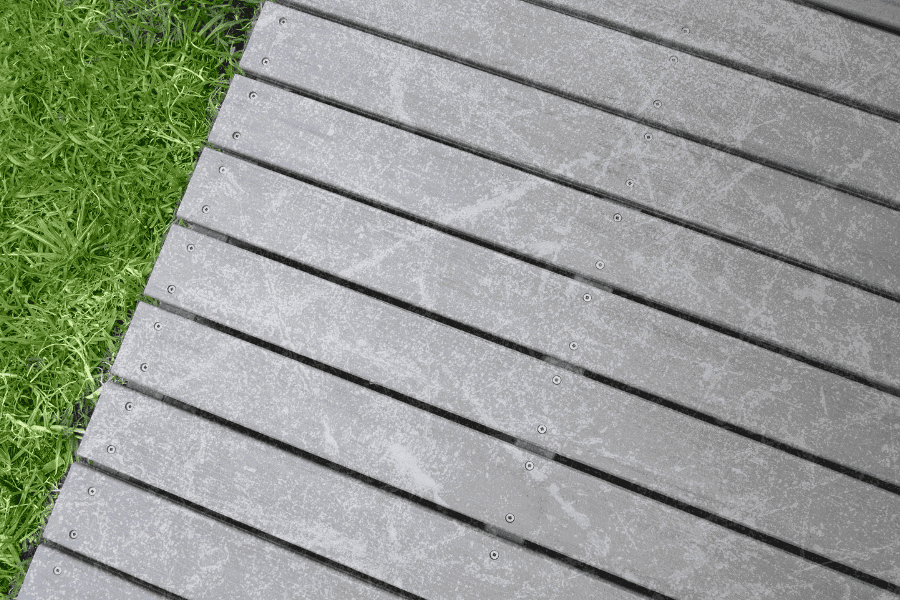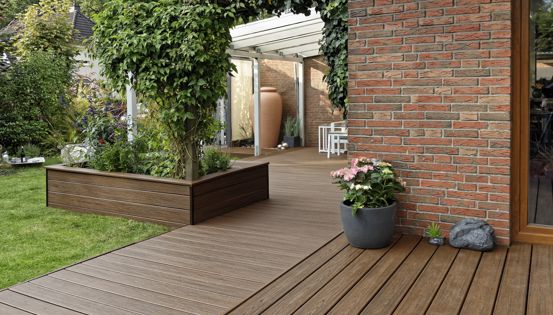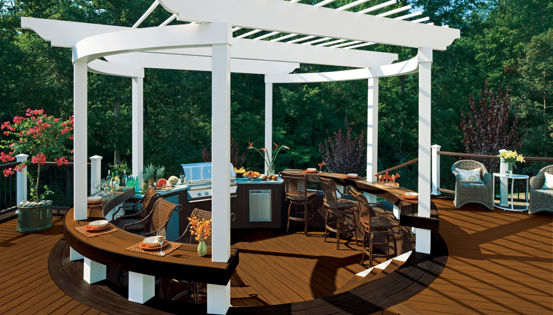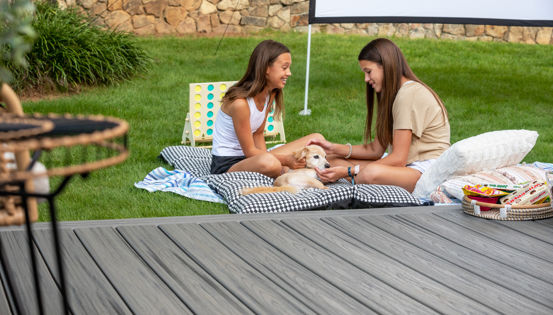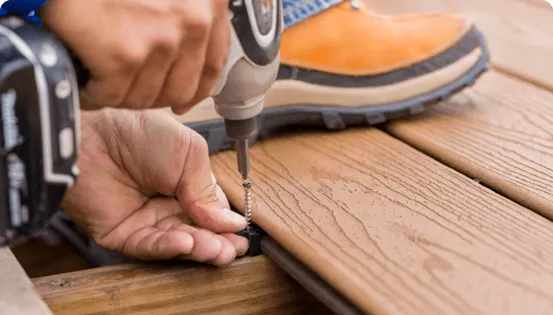If you have a composite deck, you know how durable and beautiful it can be. However, even composite decking can become scuffed or scratched over time. These blemishes can alter the appearance of your deck and make it less enjoyable to use. The question is, how can you repair composite decking? This article will show you how to remove scuffs and scratches on composite decking quickly and easily.
Why Does Composite Decking Get Scuffs and Scratches?
Composite decking is an attractive and durable option for outdoor living spaces. However, with time, you may notice some scuffs and scratches in particular areas. This can happen for several reasons, including:
- Foot traffic: Composite decks are designed to be durable, but they can still be susceptible to scuffs and scratches from foot traffic. These composite deck scratches are found on walkways and are caused by shoes like heels and boots.
- Weather: Extreme weather conditions can also cause composite decks to get scuffed and scratched. High winds can blow debris onto your deck, while hail can damage the surface.
- Furniture: When heavy furniture in the outdoor area is dragged or moved, it can leave unpleasant marks on your deck.
- Tools: Composite decks can also be damaged by tools like lawn mowers and power tools.
- Kids & Pets: Composite decks are a great option for families with kids and pets. However, children can also be responsible for composite deck scratches. They may accidentally drop toys on the surface. While scratch-resistant, a dog’s nails can also scuff or scratch composite decking. Consider adding a comfortable dog bed to encourage a safe area for your pet and to prevent scratches as they walk around or follow you.
Steps to Removing Scuff Marks and Scratches from Composite Decking
Composite decking is easy to maintain. However, it can develop scuff marks and scratches from everyday use. Here are some easy steps on how to get scuff marks off composite decking and keep your deck looking like new.
Cleaning the Deck
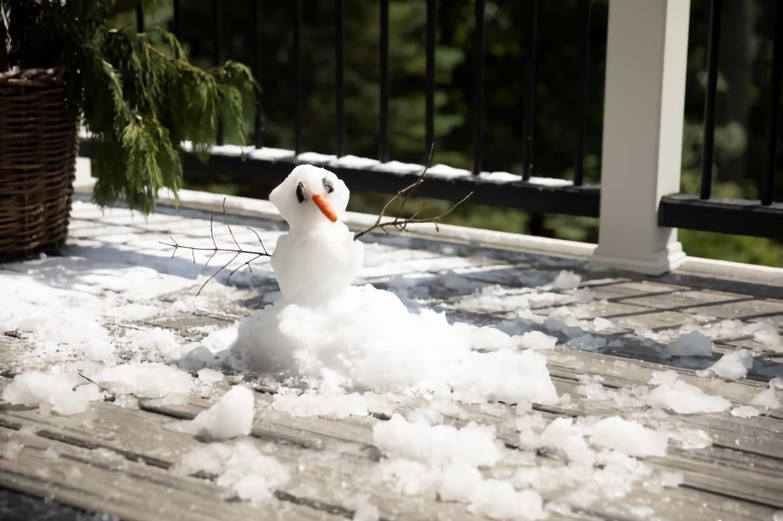
As with any stain, it is important to clean the deck before attempting to remove the scuff or scratch marks. This will help ensure that you don't just move the dirt around and make the problem worse. Use a mild soap and water solution, and scrub the area with a soft bristle brush. Avoid strong chemicals. Rinse thoroughly afterward.
Try Heat Method Using a Heat Gun
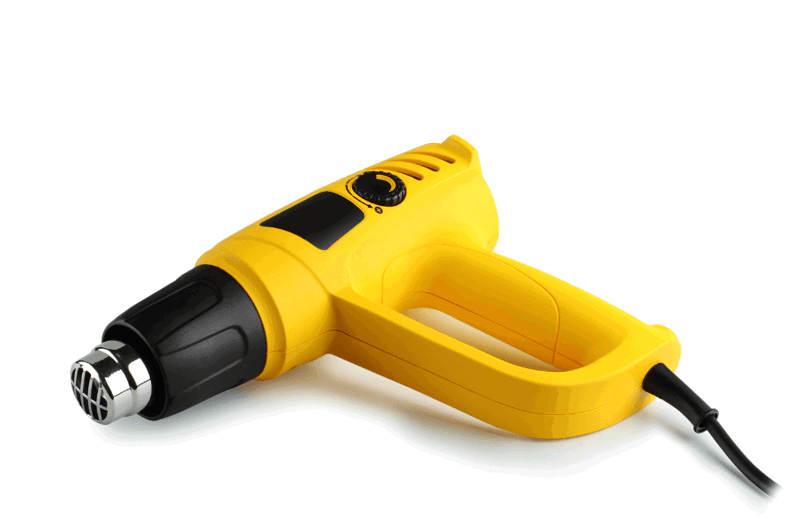
If the composite material is tolerant to high temperatures, you can try using a heat gun to remove the scuffs and scratches. Hold the heat gun about six inches away from the affected area, and move it back and forth until the marks start to disappear. Be careful not to hold the heat gun in one spot for too long, as this could damage the composite material. Good practice is to test it out on a sample board first and start at a lower heat then switch to higher setting.
Contact Your Manufacturer
You can contact the manufacturer to fix scratches on composite decking, as different materials may require different repair methods. In some cases, they may have a touch-up kit available for purchase.
Replace the Scuffed and Scratched Boards
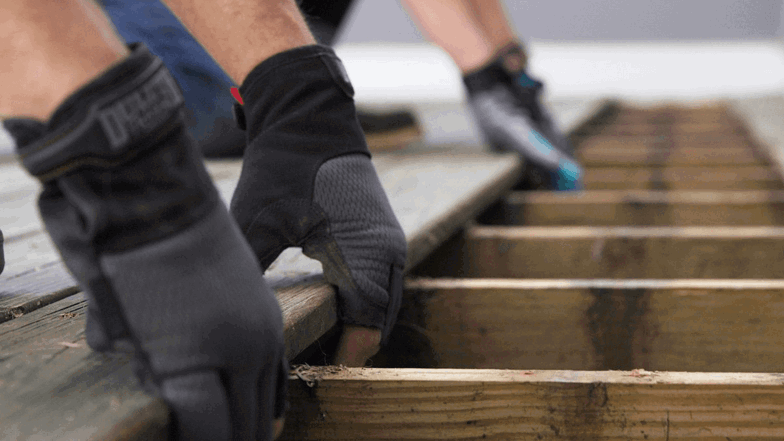
If the scuff mark is stubborn, you might need to replace your boards. This is a more extreme measure, but it will ensure that your deck looks its best. You can purchase replacement boards from the manufacturer or your local home improvement store. However, it is recommended to buy extra decking materials during the initial purchase for future replacements to ensure that you have the best color and material match possible.
Check out the full guide to resurface your deck on Trex Academy.
How to Prevent Composite Deck From Scuffs and Scratches
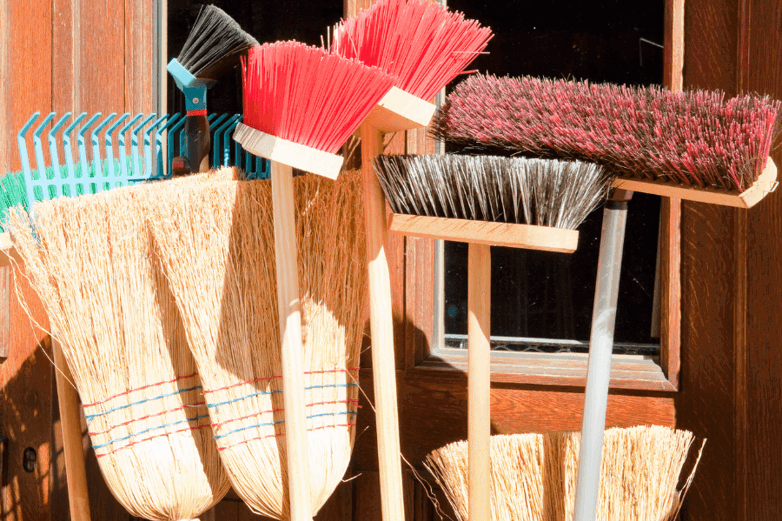
Like any other surfaces, composite decks can become scratched and scuffed over time. Fortunately, there are several tips on how to protect composite decks from scratches.
- Use furniture pads: These pads protect the furniture from scratching the floor by keeping it in place.
- Use a broom instead of a shovel to clear snow. Never use a shovel with a metal edge. Some snow shovels will be plastic but have a metal edge on them. This will help avoid scratching the surface of the deck.
- Put furniture away during cold months. This will help protect the deck from scratches and other damage that can occur when winter winds move the furniture.
Get Started with Removing Scuffs and Scratches from Your Composite Deck Today
Now that you know how to remove scuffs and scratches from composite decking, it's time to get started. With a little effort, you can keep your deck looking like new for years to come. And, if you need to replace any boards, remember to buy extra during the initial purchase, so you have them on hand when needed.
Find a Contractor or retailer to get started and let your composite deck be the envy of the neighborhood.
